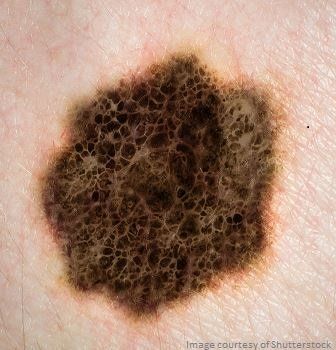Potential Combination Therapy for Melanoma Cutaneous Metastases
Interleukin (IL)-2 combined with imiquimod and topical retinoid therapy may help improve outcomes in melanoma patients with cutaneous metastases, according to a study published online August 11, 2015 in the Journal of the American Academy of Dermatology.
Image © Australis Photography/ Shutterstock.com

Interleukin (IL)-2 combined with imiquimod and topical retinoid therapy may help improve outcomes in melanoma patients with cutaneous metastases, according to a study published online August 11, 2015 in the Journal of the American Academy of Dermatology.1 The researchers reported that treating cutaneous melanoma metastases with intralesional IL-2 in combination with topical imiquimod and a retinoid cream resulted in a complete clinical local response in a cohort of patients with stage III/IV disease.
“It’s unclear if the recently developed targeted melanoma therapies that have revolutionized management of patients with internal melanoma metastases are useful in patients with metastatic disease limited of the skin,” said study investigator Emanual Maverakis, MD, who is an associate professor of dermatology at the University of California Davis, Sacramento, Calif. “Our results demonstrate that intralesional therapy with a protein that causes immune cells to divide, given in combination with a topically applied immune activator, can be a highly effective treatment for these patients.” 2
Dr. Maverakis and colleagues report that intralesional IL-2 now is included in the US National Comprehensive Cancer Network guidelines for management of melanoma metastases of the skin. However, US physicians have not adopted it. About 10% of patients with advanced melanoma develop cutaneous metastases and traditionally, treatment has consisted of surgical excision with or without radiation therapy. Recurrence rates are high and there is an acute unmet need in this patient population.
The researchers conducted a retrospective analysis of 11 patients with either stage III or stage IV melanoma who had history of treatment with IL-2 therapy combined with imiquimod and a topical retinoid. This cohort was elderly, and 10 of the 11 patients had experienced disease recurrence and several had failed nonsurgical treatments. The mean age of the patients was 69 (age range: 54 to 90 years). All of the patients had one or more chronic medical conditions, and 64% had significant cardiovascular disease.
The data indicated that all patients achieved complete clinical response to the treated lesions within 1 to 3 months of starting the intralesional IL-2-based therapy. After 2 years, 82% of patients had survived and seven were alive at the conclusion of the study without melanoma recurrence. The remaining five patients died from unrelated causes, according to the researchers. The study suggested that those patients with 20 or more metastatic lesions (N2) had similar outcomes compared to those with less than 20 metastatic lesions (N1 and N2).
“The favorable outcomes in these patients are encouraging and suggest that the therapeutic regimen may have a survival benefit,” concluded Dr. Maverakis and the research team. The authors note that the study has limitations due to the small sample size. In addition, the researchers were unable to analyze the effects of the therapeutic regimen on the systemic immune response.
References:
- Shi VY, Tran K, Patel F, et al. (2015). 100% Complete response rate in patients with cutaneous metastatic melanoma treated with intralesional interleukin (IL)-2, imiquimod, and topical retinoid combination therapy: Results of a case series. Journal of the American Academy of Dermatology, Aug 7. pii: S0190-9622(15)01866-6.
- UC Davis Health System. (2015). New combination treatment effective against melanoma skin metastases.